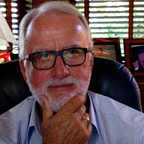6 Pitfalls That CEOs Should Avoid
There is a lot of emphasis on encouraging CEOs to develop good habits, but sometimes it can be just as important to break bad ones. Sydney Finkelstein, the Steven Roth Professor of Management at the Tuck School of Business at Dartmouth College, and the author of “ Why Smart Executives Fail,” spent years researching the personal qualities and habits that have led executives to failure. In an Ivey Business Journal article, he identifies six pitfalls to avoid.
Finkelstein says leaders who fail on a monumental scale exhibit at least four or five of these characteristics and sometimes all six. He says many of the CEOs who have experienced unfavorable outcomes are highly intelligent and charismatic individuals, the type of leaders featured on the covers of high-profile publications.
1. Regarding themselves and their firms as dominating their environment.
Leaders who’ve attained a position of dominance within their industries can become victims of their own success if they overestimate their control of the broader environment and fail to realize the role chance plays in their success. Finkelstein says such leaders suffer from the illusion of personal preeminence and regard others in the organization as solely there to enact their personal vision. He gives the example of Kun-Hee Lee, the Samsung CEO who invested $5 billion in an oversaturated auto market, confident he could replicate his success with electronics. However, this did not happen.
2. Thinking they know everything.
We tend to admire decisive leaders who can cut to the chase and make tough decisions quickly under challenging circumstances. But leaders who are too quick to make decisions often fail to grasp the consequences of their choices or the subtleties of the situation. And even worse, those who think they have all the answers already fail to learn any new ones. For example, Wolfgang Schmitt, the chief executive officer of Rubbermaid, took the company from being one of Fortune’s most admired companies in 1993 to being sold to Newell just a few years later. He took pride in his ability to make hard decisions in a flash, seldom taking the time to hear different points of view.
3. Eliminating dissenters.
Developing a shared vision and sense of purpose is often high on the list of any new CEO’s priorities. But beware if this objective includes eliminating any dissenting voices. It’s not necessary to have a unanimous endorsement for a vision to be successfully delivered. In fact, dissenting voices that offer a contrary view of things can often be a CEO’s best opportunity of anticipating and addressing problems before they arise. Or they can chase away new executive talent as soon as it’s acquired, as executives realize they won’t have the support of their CEO.
4. They are obsessed with image.
CEOs who become obsessed with media attention are experts at creating the appearance of accomplishing things instead of actually doing so. Because the reality is that to become a media darling is a full-time job that doesn’t leave time for any real work. They also run the risk of treating financial reports as PR tools rather than control tools.
5. They underestimate obstacles.
Unrealistic expectations can make it difficult for CEOs to correct their chosen course of action, even when it becomes apparent it isn’t working. Of course, there will always be those who argue that a competent CEO would have presented a winning vision first off. And if CEOs become overly enamored of their vision, they can often underestimate the obstacles to its success, potentially pushing the organization forward on a path to failure. For instance, executives at Iridium and Motorola kept spending billions on satellites long after it had become apparent that land-based cellphones were a better alternative.
6. They focus on what worked in the past.
CEOs who fail to understand the changing nature of their environment will constantly revert to past successes, hoping that what worked for them in the past will result in success again. By reverting to tried-and-true methods, they adhere to static, out-of-date business models designed for markets that no longer exist or products that bear no relation to what they’re currently working with. They allow their defining moments to also define their failures.
Ultimately, CEOs should strive to avoid each of these pitfalls on the path to success.
Originally published at https://ralphthurman.com on November 11, 2021.
